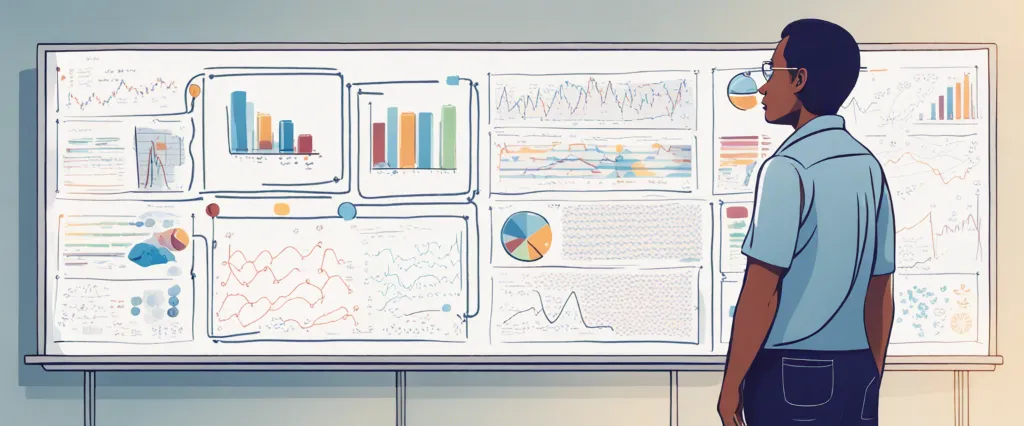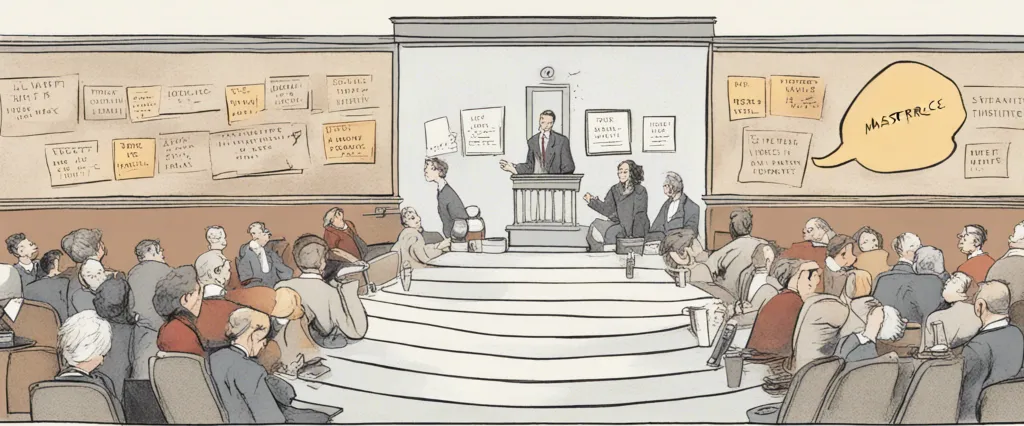In “Think Like a Freak” renowned economist Steven D. Levitt, along with journalist Stephen J. Dubner, present a fascinating exploration of unconventional thinking and problem-solving techniques. This engaging non-fiction work expands upon the duo’s previous bestsellers, “Freakonomics” and “SuperFreakonomics,” and offers invaluable insights on how to break free from conventional wisdom and approach challenges with a fresh perspective. Levitt, a Professor of Economics at the University of Chicago, has built a distinguished career analyzing data and uncovering hidden patterns in unique and unexpected ways, which has earned him a reputation as a “freak” in the field. Together with Dubner’s skillful storytelling ability, they provide readers with a captivating guide filled with humorous anecdotes, intriguing case studies, and practical strategies for mastering the art of thinking differently.
The Power of Unconventional Thinking
The authors argue that traditional thinking often limits our ability to find innovative and effective solutions. They assert that opening our minds to unconventional ideas can lead to breakthroughs in various aspects of life, such as business, education, and personal relationships.
To illustrate their point, Levitt and Dubner provide several examples. They discuss how a general approached the problem of low morale and discipline in the U.S. Army by allowing soldiers to express their frustrations openly in “Gripe Sessions.” This unconventionality led to a significant improvement in morale and productivity.
Furthermore, the authors highlight the power of incentives and how they can be used to influence behavior. They discuss a study on the issue of kids losing their lunch money and how an unconventional solution involving a “token” system reduced the problem drastically. This example emphasizes the importance of thinking creatively and exploring unorthodox methods to solve complex problems.
Ultimately, Levitt and Dubner argue that embracing unconventional thinking means challenging conventional wisdom and questioning assumptions. They encourage readers to consider new perspectives, question established norms, and take risks in order to discover unique and effective solutions.
By challenging traditional thinking and embracing novel ideas, individuals can find innovative solutions that yield positive results.
Incentives and their Unintended Consequences
In the book, Levitt and Dubner examine the power of incentives and highlight how they can have unintended consequences.
The authors argue that incentives often drive human behavior, but they emphasize that not all incentives are created equal. They caution against assuming that incentives will always lead to the desired outcomes, as people may respond in unexpected ways. Drawing upon various real-life examples, Levitt and Dubner illustrate how incentives can backfire and produce unintended consequences.
One notable example is the case of teaching incentives. In the education sector, policymakers often rely on financial incentives to motivate teachers to achieve better student performance. However, the authors explain that this approach can lead to unintended consequences. For instance, when teachers are primarily driven by test scores, they may resort to teaching to the test rather than nurturing core skills. As a result, students may become adept at answering standardized questions, but lack critical thinking skills.
Levitt and Dubner also examine incentives within the world of sports, showing how they can create unintended consequences. They discuss the case of sumo wrestling in Japan, where wrestlers are motivated to win by financial incentives. However, they found evidence of widespread match-fixing, as some wrestlers would purposefully lose matches to manipulate rankings and secure financial gains. In this scenario, the incentive to prioritize monetary rewards overshadowed the integrity of the sport.
Through engaging stories and examples, Levitt and Dubner prompt readers to question the effectiveness of certain incentives and explore alternative approaches to problem-solving. They encourage people to think critically and examine the potential unintended outcomes before implementing incentives to drive behavior.
The Hidden Side of Data
Levitt begins by discussing the concept of “data mining” and how it can sometimes lead to false conclusions due to the sheer volume of data available. He argues that merely searching for patterns within data is not enough; one must also consider the underlying causes and mechanisms behind those patterns.
To illustrate this, Levitt presents the case of a school district that wanted to improve its performance in standardized tests. Administrators found that schools with more computers tended to have higher scores. However, upon closer examination, it was revealed that wealthier schools could afford more computers and therefore had an advantage. The data alone did not tell the whole story.
Levitt further emphasizes the importance of asking the right questions when analyzing data. He suggests that economists are skilled at identifying the hidden side of data because they focus on the why rather than the what. By understanding the underlying incentives and motivations, one can gain a better grasp of the actual causes and effects.
The chapter concludes with Levitt cautioning against overlooking the hidden side of data. He urges readers to be skeptical and always dig deeper to gain a complete understanding of the information at hand. By doing so, one can make more accurate and informed decisions based on evidence rather than superficial patterns.
It reminds readers to not be easily swayed by surface-level patterns and to think like a “freak” by questioning the hidden side of data.
Thinking Like a Child

The authors suggest that adults often become trapped in conventional thinking and are hesitant to question established norms. They believe that this hinders creativity and prevents individuals from finding unconventional solutions to problems. By studying how children approach various situations, Levitt and Dubner highlight valuable thinking strategies that can be applied to everyday life.
One key concept in the book is the importance of asking the right questions. Children are naturally inclined to ask why and challenge assumptions, allowing them to uncover valuable insights. Levitt argues that adults should adopt this mindset to explore new possibilities and challenge prevailing wisdom.
The book also emphasizes the significance of experimentation and embracing failure. Children are not afraid of making mistakes and trying different approaches until they find a successful one. Levitt encourages readers to adopt a similar mindset by embracing experimentation, learning from failures, and continuously improving.
Furthermore, the authors discuss how thinking like a child can aid in solving complex problems. Children often simplify problems by breaking them down into manageable parts. Levitt suggests that adults should do the same to tackle complex issues more effectively.
By challenging conventional wisdom and adopting a fresh perspective, Levitt argues that individuals can find innovative solutions, making significant strides in their personal and professional lives.
The Power of Saying “I Don’t Know”
This stems from the fear of looking uninformed or admitting weakness. However, they argue that acknowledging one’s knowledge boundaries can actually lead to more effective problem-solving.
The authors illustrate the power of saying “I don’t know” through various real-life examples. For instance, they discuss a consultant named David K. who used to maintain an illusion of expertise, often guessing answers to appear knowledgeable. However, David realized that he gained more respect and trust from clients when he admitted uncertainty and emphasized his ability to find the right answer. This approach allowed him to learn more, build better relationships, and ultimately deliver superior results.
Another example revolves around the famous game show “Who Wants to Be a Millionaire?” Contestants who were unsure of an answer were given the option to admit their ignorance and walk away with a certain sum of money. The authors reveal that those who admitted not knowing were more likely to win larger amounts, as they were less prone to blind guesses.
It encourages individuals to embrace curiosity, be open to learning, and seek out the truth rather than settling for half-baked answers. By embracing uncertainty and admitting ignorance, people can improve their decision-making skills and lead more thoughtful, informed lives.
Thinking Small
Levitt and his co-author, Stephen J. Dubner, begin by highlighting the role of small-scale experiments in solving complex problems. They argue that experimenting on a smaller scale allows for quick, cost-effective testing of various solutions and enables adjustments to be made without major consequences. By focusing on small, incremental changes, individuals and organizations can avoid the pitfalls of big, risky endeavors.
The authors introduce the concept of “freakonomics,” which involves analyzing incentives and hidden motivations that drive human behavior. They illustrate this through various real-life examples, such as breaking down the challenge of reducing school dropout rates. Instead of attempting large-scale interventions, which often fail, Levitt encourages analyzing the reasons behind individual students dropping out and implementing targeted solutions tailored to specific cases.
The chapter also explores the idea of thinking like a child, who approaches problems with curiosity and an open mind. Levitt argues that adults tend to overcomplicate matters and dismiss unconventional ideas, whereas children have a natural ability to question established norms. By channeling this child-like mindset and challenging assumptions, individuals can unlock new possibilities and find creative solutions.
Levitt and Dubner encourage readers to embrace a problem-solving approach that challenges conventional wisdom, analyzes incentives, and thinks like a child.
The Upside of Quitting
The authors argue that people often stick to activities, jobs, or relationships despite their increasing dissatisfaction or lack of success simply because they fear quitting. They make the case that quitting can actually be liberating and offer numerous advantages.
Levitt and Dubner discuss various real-life examples where quitting has led to success. They highlight the story of professional golfer Vijay Singh, who quit a prestigious engineering program to pursue golf and eventually became a world-class player. They also discuss the concept of “sunk costs,” where people continue investing resources into something because they have already invested heavily in it, even when it no longer makes sense to do so.
The authors emphasize that quitting should not be seen as a failure but rather as a rational decision based on the analysis of future costs and benefits. They suggest that by quitting, individuals free up their time, energy, and resources to pursue more fulfilling or rewarding endeavors. They also argue that quitting can lead to personal growth and new opportunities that may have otherwise been overlooked.

Solving Problems with a Freakish Mindset
The book emphasizes the importance of thinking like a freak, which involves challenging established norms and embracing a mindset that allows for innovative thinking.
The authors begin by highlighting the power of asking the right questions. They urge readers to think beyond superficial explanations and dig deeper to find the root causes of problems. Using real-life examples, Levitt and Dubner demonstrate how this mindset can uncover hidden solutions and shed new light on complex issues.
Throughout the book, the authors emphasize the need to embrace failure and learn from it. They argue that success often comes from trial and error, and the fear of failure can hinder progress. Adopting a freakish mindset means being open to taking risks and learning from mistakes.
Levitt and Dubner also stress the importance of incentives and how they influence human behavior. They explain how understanding the incentives behind people’s actions can be powerful in predicting their behavior and finding innovative solutions. By aligning incentives correctly, individuals and organizations can motivate people to make desired changes.
In addition, the authors emphasize the value of thinking creatively and challenging traditional approaches. They encourage readers to consider unorthodox solutions and not rely on conventional wisdom when trying to solve problems. This open-minded approach can lead to innovative solutions that others may overlook.
By adopting these principles, individuals can unleash their inner freak and uncover unexpected solutions to the problems they encounter.
After Reading
In conclusion, “Think Like a Freak” by Steven D. Levitt provides readers with an insightful and thought-provoking guide on how to approach problems and think differently. Levitt, along with co-author Stephen J. Dubner, emphasizes the importance of questioning conventional wisdom, challenging assumptions, and embracing the power of incentives. Through a series of fascinating anecdotes and real-world examples, the authors illustrate the value of curiosity, humility, and open-mindedness in tackling complex issues. They offer practical strategies for problem-solving, decision-making, and creative thinking, encouraging readers to break free from traditional patterns of thought and explore innovative solutions. By adopting the principles described in this book, readers can develop the mindset of a “freak,” harnessing the power of unconventional thinking to navigate the challenges of everyday life. “Think Like a Freak” is an eye-opening and empowering read that encourages readers to challenge the status quo and embrace a more open, curious, and rational approach to problem-solving.
Book 1: “The Undoing Project” by Michael Lewis
The Undoing Project” explores the fascinating partnership between two Israeli psychologists, Daniel Kahneman and Amos Tversky, whose groundbreaking research on human decision-making challenged traditional economic theories. Michael Lewis combines psychology and economics to vividly depict the duo’s unconventional approach and their profound impact on our understanding of human behavior.
Book 2: “The Art of Seduction” by Robert Greene
In “The Art of Seduction,” Robert Greene delves into the timeless tactics and strategies employed by seducers throughout history. Drawing inspiration from historical figures and seductive archetypes, Greene provides readers with a captivating exploration of human desires, manipulation, and the various ways people can captivate one another.
Book 3: “Sources of Power” by Gary Klein
“Sources of Power” sheds light on the decision-making process through the lens of naturalistic decision-making (NDM). Gary Klein, a pioneering cognitive psychologist, examines how individuals in high-stakes professions, such as firefighters and surgeons, make critical choices based on intuition and experience. By understanding the power of intuition, readers can gain valuable insights into their own decision-making processes.
Book 4: “Blink: The Power of Thinking Without Thinking” by Malcolm Gladwell
Malcolm Gladwell’s “Blink” invites readers to explore the power of intuition and the unconscious mind in decision-making. Gladwell combines engaging stories, scientific research, and real-world examples to illustrate how quick, instinctive thinking can often be as effective as prolonged analysis. This thought-provoking book offers a fresh perspective on the human mind’s remarkable ability to make split-second judgments.
Book 5: “Influence: The Psychology of Persuasion” by Robert Cialdini
“Influence” is a classic exploration of the principles underlying persuasive techniques. Robert Cialdini, a renowned social psychologist, unveils the psychological triggers that make people susceptible to persuasion. Through six principles – reciprocity, commitment and consistency, social proof, authority, liking, and scarcity – Cialdini equips readers with valuable knowledge to both ethically influence others and resist manipulative tactics.
These five books offer a diverse range of insights into decision-making, persuasion, and human behavior. From the unconventional partnership of Kahneman and Tversky to the historical tactics of seduction, these reads will engage and challenge your understanding of the forces that shape our choices.




